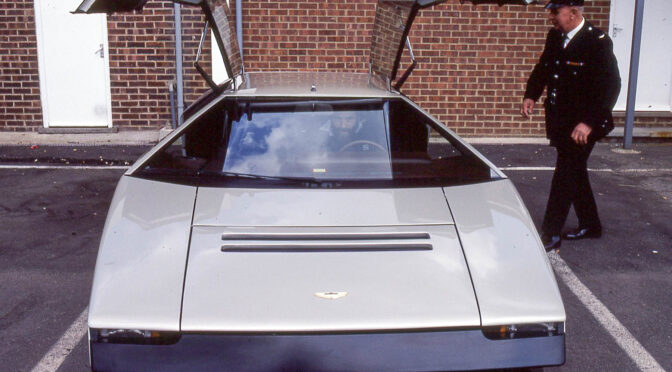A-Z of Car Stuff
This is one in a series of posts on cars, drivers, designers etc. that have interested me over the years. I’ve bored my family and friends with this stuff for years – now it’s your turn!
See A-Z of Car Stuff page for more posts in this series.
Aston Martin Bulldog?
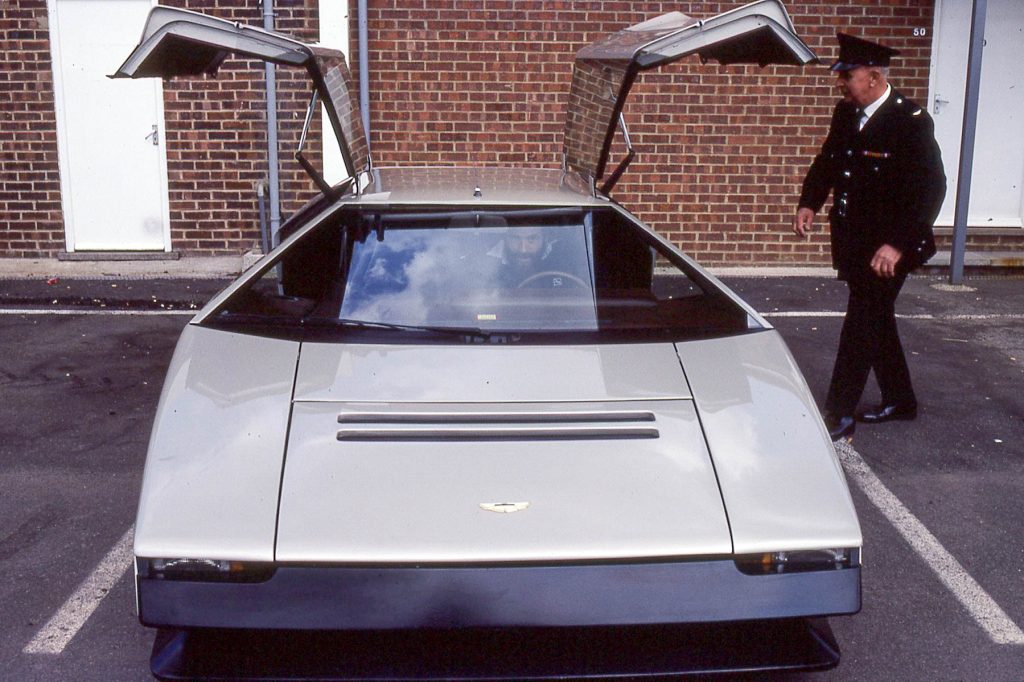
This unique car dates from 1979 during the William Towns period of Aston Martin design which also resulted in the the similarly angular Aston Martin Lagonda saloon.
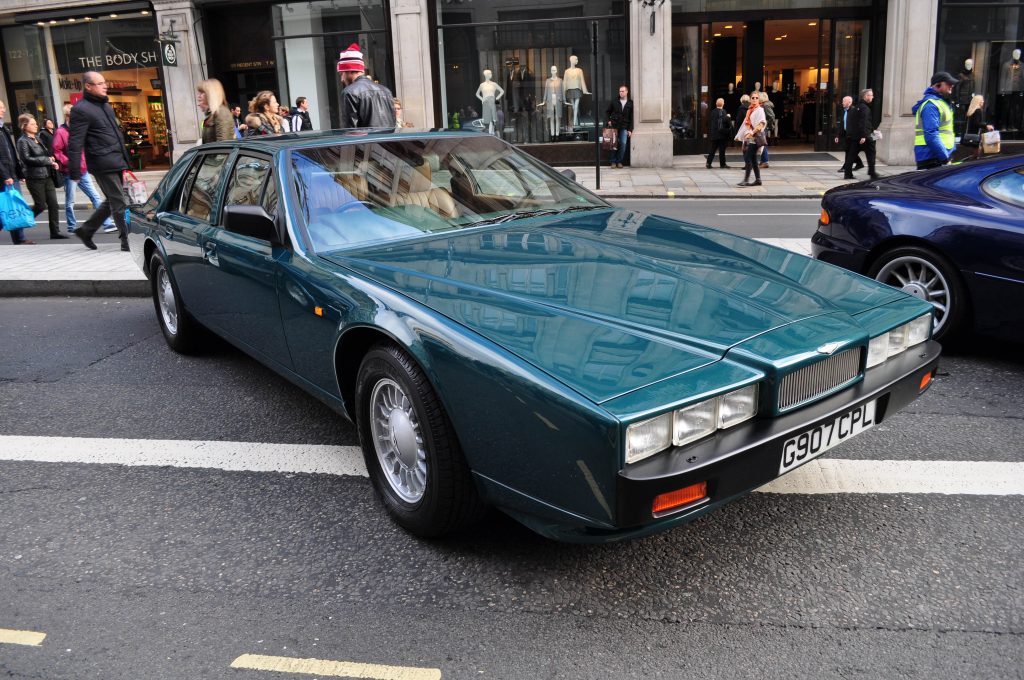
History
With a nod to the past – the car was launched at Aston Clinton – the Buckinghamshire location of a competitive hill climb between 1904 and 1925. Lionel Martin and Robert Bamford raced their “special” at this venue and opted to use the “Aston” from Aston Clinton and “Martin” from Lionel Martin as the name their new company – Aston Martin!
Although Aston Martin originally intended to build a limited run of twenty five Bulldogs – only one example was built and it still survives in private ownership having been sold off in 1981 when incoming chairman Victor Gauntlett decided that its development programme and publicity exploitation for the company was completed.
AMOC Meeting – Silverstone 1981
I first saw the Bulldog at an Aston Martin Owner’s Club meeting at Silverstone in 1981. Upon arrival in the paddock – it immediately drew crowds around it like bees to a honey pot. All of the photos in this post are from that encounter.
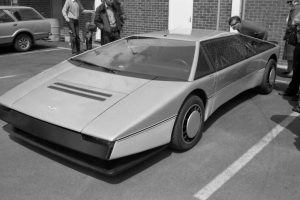
It was not a pretty car but it was undeniably striking – especially with it’s gullwing doors fully open. It’s a shame that it remained a one-off, as a limited run of Aston Supercars would have done the company the world of good.
Having said that, after further changes in ownership – Aston Martin is still going strong and actually seems to be doing rather well with its range of powerful front-engined GT road and race cars. It’s interesting to speculate however – what direction the company could have taken if they had gone on to manufacture production versions of their mid-engined supercar!
Origins
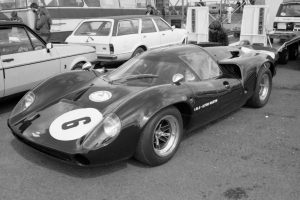
The Bulldog’s mid-engine configuration was presumably influenced by an earlier joint development in 1967 with Eric Broadley’s Lola sports car manufacturing company which resulted in the Lola-Aston Martin T70 MkIII.
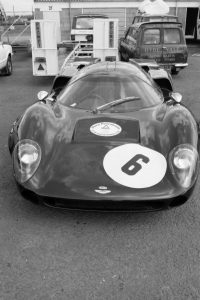
This beautiful car was effectively a test-bed for Aston Martin’s new V8 engine using an already successful race car. The Lola-Aston was created by swapping the engine normally residing in the T70 chassis (a highly tuned Chevrolet V8) for Aston Martin’s then new V8 engine.

The Aston V8 had been designed by Tadek Marek to replace the venerable Aston straight-six (also designed and onward developed by Marek). The V8 was intended for road cars rather than racing so Marek was understandably concerned about it being used so early on in a sports car context.
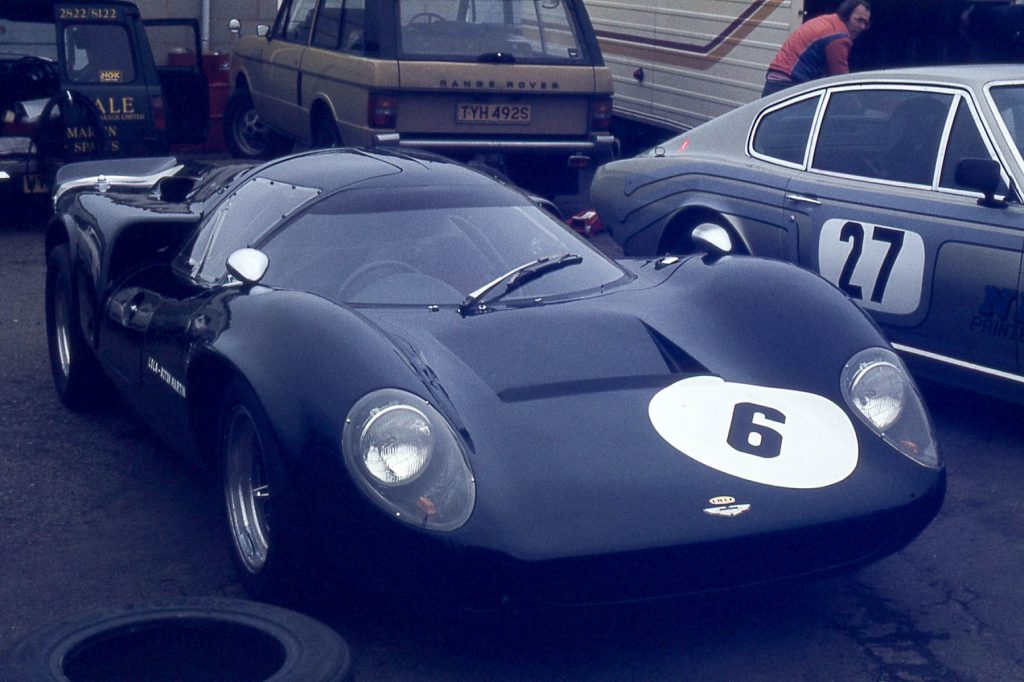
Race results of the two Lola-Aston Martin T70 cars created were initially poor but it was the start of a phase of continuous development of the V8 engine which eventually ended-up in road going Astons and a number of competitive race cars.
Purpose
As a complete one-off – the Bulldog must be regarded as a working prototype or concept car built to explore potential design and technological directions for Aston Martin.
Had twenty four siblings also been built then it would have been a very different story as the company would have produced an exclusive limited edition run of Aston Martin supercars very much in the same vein as Ferrari did with their F40 and Porsche did with the 959 and Carrera GT.
This would have been a very brave move for a company who’s traditionally precarious finances led to regular changes of ownership between periods of relative stability.
Specification
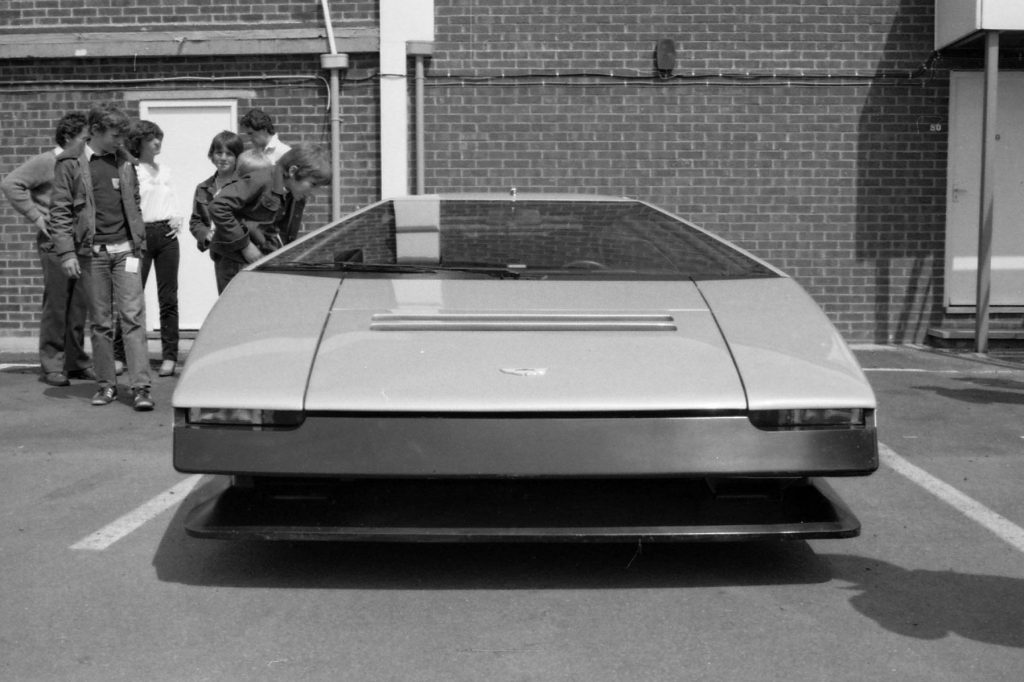
At 4.7 metres long and 1.9 metres wide – the Bulldog was a seriously imposing car and its length and girth were accentuated by its very low height of just over 1 metre.
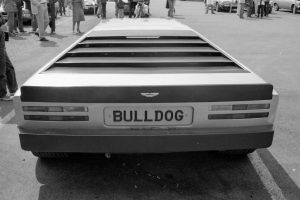
The chassis of the car was a complex tubular steel construction with a central backbone and built-in roll-cage.
Wrapped around this was the the angular William Towns designed alloy bodywork incorporating absolutely massive gullwing doors. When fully opened – the gullwing doors extended the height of the car to two metres which gave the car extremely dramatic front and side aspects.
A total of four fuel tanks were centrally located in the chassis to aid weight distribution.
Suspension consisted of independent double wishbones at the front with telescopic shock absorbers and a De Dion rear axle with trailing arms, Watts linkage and telescopic shock absorbers. Wheels were wide alloy Compomotive split-rims wearing hefty Pirelli P7 tyres.
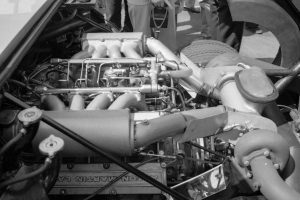
At the heart of the car was a mid-mounted 5.3 Litre twin-turbocharged and Bosch fuel injected V8 engine producing around 700bhp. Even with relatively limited development of the car – this engine was able to propel the car to a speed of 192mph at the Motor Industry Research Association (MIRA) test track.
Transmission was handled by a robust five speed ZF transaxle gearbox hung off the back of the engine and linked to a self locking differential.
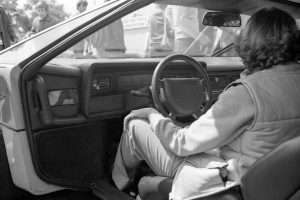
The luxuriously trimmed interior featured custom built seats clad in Connolly leather and sumptuous Wilton carpets.
Digital dashboard instrumentation was similar to that used in the Lagonda saloon and to counter the greenhouse effect from the large windscreen and door glass – the car was fitted with air conditioning. Not sure how the windows in the gulping doors worked (if at all) so getting in and out of car parks or through toll barriers could have been interesting!
Although the car was long and wide when compared with contemporary sports cars – it remained a strict two-seater but in this respect it was no different to the much later (early ’90s) Jaguar XJ200.
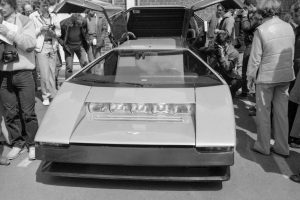
The very low frontal area of the car was helped by the lack of protruding headlights but as it was intended to be road legal – a bank of 5 quartz headlights was hidden behind a front hinged bonnet panel which lowered to reveal the headlights. Whilst this was an elegant design feature – it must have had a pretty dramatic effect on the car’s aerodynamics at high speeds.
It is highly likely that with further development of the engine and the car’s aerodynamics – it would have been easily capable of exceeding 200mph which in 1979 would have been a highly notable achievement.
Links To Aston Martin Bulldog Articles
http://astonmartins.com/car/bulldog/
